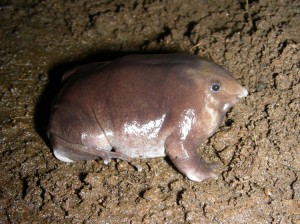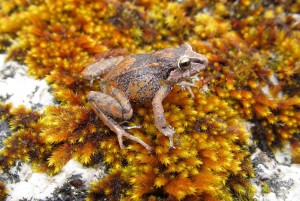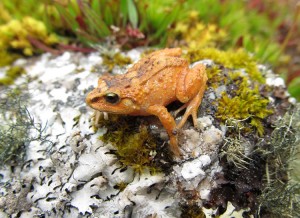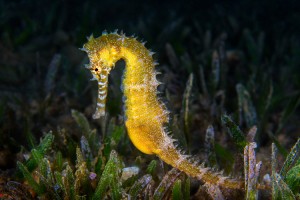New Purple Pig-Nosed Frogs
Friday, September 29th, 2017September 29, 2017
The region of the Western Ghats mountain range in India has turned up another new species of frog in 2017, and this one is quite bizarre. Bhupathy’s purple frog was named in honor of noted herpetologist Subramaniam Bhupathy, who died from a fall during an expedition in the Western Ghats in 2014. Herpetology is the branch of zoology concerned with the study of reptiles and amphibians. Bhupathy’s purple frog is rather stout with shiny purple skin, small eyes ringed with light blue, and a pointy piglike nose.

The unusual and newly discovered Bhupathy’s purple frog surfaces only during monsoon (and mating) season. Credit: © Jegath Janani, Alytes
You may recall a Behind the Headlines entry from earlier this year describing seven tiny new frogs also found in the Western Ghats region. Seven at one time is astounding, but it may be an even greater feat to have discovered this single amphibian. You see, Bhupathy’s purple pig-nose frog lives almost entirely underground and has only one other member in its frog genus Nasikabatrachus. Elizabeth Prendini, a herpetologist at the American Museum of Natural History in New York City, co-wrote a paper describing the species in a recent issue of the batrachology (study of amphibians) journal Alytes.
Bhupathy’s purple frog looks bizarre, to be sure, but it also has a bizarre life cycle. The only time an adult frog emerges from of its underground home is during the monsoon season. The reason for this excursion is to mate. When the rainy season begins, the male purple pig-nose frog calls from underground and is lured into the open by the presence of an interested female. After frog negotiations are complete, the frogs mate in a stream, leaving behind fertilized eggs. The frog parents then go their own ways and crawl back beneath the soil. After the tadpoles hatch, they move from the streams to cliffs behind waterfalls, where they cling to rocks using suckerlike mouths, devouring the algae that grow there. After several weeks, the tadpoles develop into adult frogs and drop from the waterfall cliffs. They then find a suitable place to make their underground home, where they live the rest of their lives—except to mate, of course, during the rainy season. Bhupathy’s purple frogs do not even surface to eat. They use their long, fluted tongues to eat subterranean termites and ants.
Bhupathy’s purple pig-nose frogs may be unlike any others, but like most frogs, unfortunately, they are endangered. One-third of the frogs in the Western Ghats region are threatened with extinction. Increased conservation efforts are needed to protect these new species as well as other frogs from threats posed by habitat loss, pollution, and climate change.





